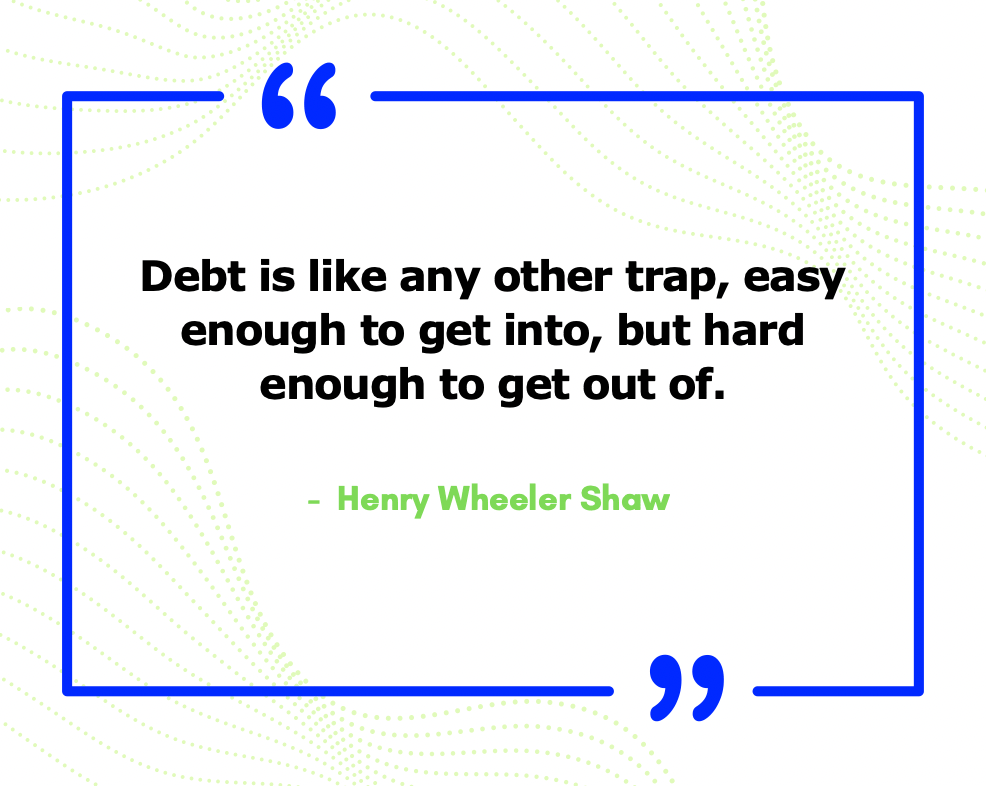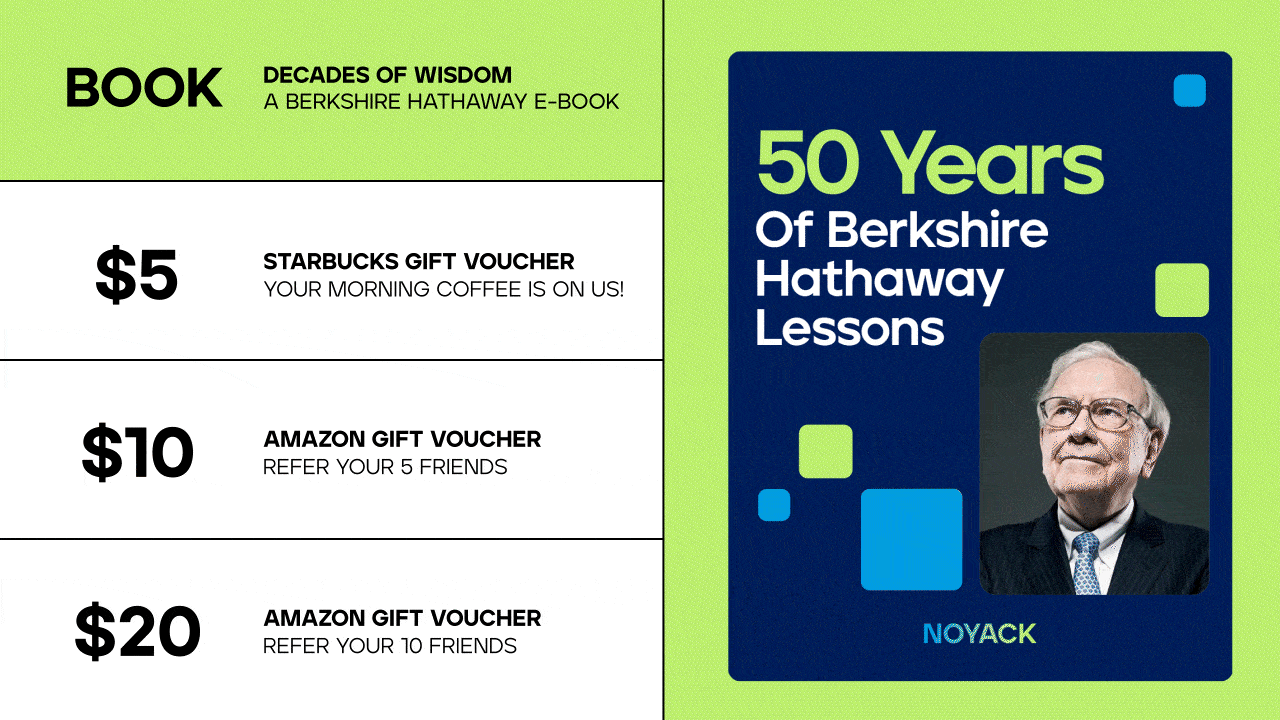Good Morning Noyackers!☕
Debt remains a significant obstacle for HENRYs, even with their high incomes. While managing wealth may seem straightforward, many find themselves weighed down by student loans, credit cards, and rising lifestyle expenses.
As I sip my freshly roasted cup of Rwanda Rusizi Mushaka—crafted from green beans I bought from Sweet Maria’s (check them out here)—I’m reminded that managing debt is much like perfecting a roast. It requires patience, a solid plan, and the right tools to achieve the best outcome.
Today, we’ll explore:
Why HENRYs face debt struggles,
Effective debt management strategies,
And how PocketGuard can help you get ahead.
Plus, we’ll hear from Dmitry Savransky, CEO of PocketGuard, on overcoming financial challenges. Let’s dive in!
First, some important debt-related news: President Biden recently announced that over 1 million public service workers have had their student loans canceled under the Public Service Loan Forgiveness (PSLF) program, a significant jump from the 7,000 who received forgiveness before his administration. This includes $4.5 billion in relief for over 60,000 borrowers, benefiting public servants like teachers, nurses, and firefighters.
This move not only eases personal debt burdens but also boosts the economy by freeing workers to invest in homes, start businesses, and improve their financial health. Key relief includes:
$74 billion for over 1 million borrowers through PSLF.
$56.5 billion for 1.4 million borrowers through Income-Driven Repayment, including the SAVE plan.
$28.7 billion for 1.6 million borrowers affected by school closures or fraud.
$16.2 billion for 572,000 borrowers with total and permanent disabilities.
If you need help navigating PSLF, check out the Student Debt Navigator for personalized support. Now, let’s focus on managing your financial picture

Why Are HENRYs Still Struggling?
Even with high incomes, many HENRYs (High Earners, Not Rich Yet) find themselves caught in a cycle of debt that’s difficult to escape. With the rising cost of living, inflation, and economic uncertainty, it’s becoming harder to save and build wealth. Add to that some common financial missteps, and it’s easy to see why many HENRYs feel stuck. Here are a few key challenges:
🎓 Student Loans: For many, student loans stick around much longer than expected. With balances often ranging from $30,000 to $120,000, these payments can make it difficult to move forward financially, especially when combined with other debt.
💳 Credit Card Debt: Credit cards are convenient, but they can lead to high balances. Roughly 67% of HENRYs carry an average balance of more than $5,000, with interest rates hovering near 20%, making debt repayment a long, expensive process.
🚗 Expensive Cars: It’s tempting to drive a new or luxury car, but auto loans—averaging around $24,000—bring hefty monthly payments that quickly eat into savings or investment potential.
🍽️ Lifestyle Inflation: As incomes rise, so do spending habits. Dining out frequently, traveling, and upgrading to the latest tech can become regular expenses, reducing the amount available for long-term savings.
🛒 Buy Now, Pay Later Services: These services make it easy to buy now, but delaying payments often leads to accumulating debt, sometimes with interest that adds up faster than expected.
💸 High-Interest Credit Cards: Carrying a balance on high-interest credit cards can be costly, especially when compounded month over month. This kind of debt can quickly snowball, making it harder to pay down.
📱 Social Media & Peer Pressure: Constant exposure to influencers and peers can drive spending on luxury items and experiences, even when they don’t align with long-term financial goals.
By their 30s, many HENRYs are juggling student loans, auto loans, credit card debt, and even mortgages. All these obligations—paired with interest rates and frequent payments—make it challenging to build meaningful savings or invest for the future.
Smart Tip: Managing your income effectively is about more than just earning well; it’s about using it wisely. Reducing debt early frees up more of your income to focus on long-term financial growth and security.
Here’s a visual guide that breaks down how debt can work for or against you:

Step-by-Step: Your Path to Debt Freedom
The good news is, tackling debt doesn’t have to be overwhelming when you break it down into manageable steps. Here are a few effective strategies that can help you take control and start building toward financial freedom:
1️⃣ Focus on High-Interest Debt First
High-interest debt, like credit cards, can eat away at your income quickly. One powerful strategy to tackle this is the “debt avalanche” method. This means you start by making minimum payments on all your debts, while directing any extra funds toward the debt with the highest interest rate. Once the highest-interest debt is paid off, you move to the next one. This approach minimizes the total interest you’ll pay and speeds up your journey to debt freedom.
Example: Clearing a credit card balance with a 20% APR before paying off a student loan at 5% APR saves you significantly more in interest.
Final Tip:
If you're struggling to make progress, consider consulting a financial advisor or credit counselor to explore options like debt management plans (DMPs) that can lower interest rates and create more manageable payment plans, helping you eliminate high-interest debt faster.
2️⃣ Create a Budget That Works for You
Think of a budget as your financial map—without one, it’s easy to lose track of where your money is going. Track every expense (yes, even those little purchases like Saturday brunch) to understand your spending habits. Tools like PocketGuard can help by automatically tracking your expenses and creating a budget that prioritizes essentials, bills, and savings goals. You’ll be amazed at the difference just knowing where your money goes can make.
3️⃣ Make More Than Minimum Payments
Making minimum payments may keep creditors satisfied, but it stretches out your repayment period and racks up more interest. Even just adding an extra $50 to your monthly payment on a credit card or auto loan can help reduce the balance faster and save you a surprising amount in interest over time. Think of it like giving your debt “double shots” of repayment—each extra payment speeds up your progress toward freedom.
4️⃣ Cut Back (a Little) on Lifestyle Expenses
HENRYs are known for their love of experiences—whether that’s dining out, travel, or personal indulgences. While these bring joy, they can also add up quickly. The good news? Temporary changes can make a significant impact without feeling like you’re sacrificing too much. Try cooking at home a few nights a week instead of dining out or swap a luxury weekend getaway for a staycation. These small changes can free up cash to pay down debt without eliminating what you enjoy.
5️⃣ Automate Payments and Savings
Automation is your friend when it comes to managing finances. Set up automatic payments for bills and debt to avoid late fees, and schedule regular transfers to a savings account to build up your emergency fund without even thinking about it. Automating these essentials helps create consistency, freeing you from worrying about missing deadlines or scrambling to meet payment dates.
Pro Tip: Automating your finances is like setting your financial life on autopilot. You’re still in control, but it runs smoothly with less effort, helping you stay consistent with your goals.

Building Financial Resilience Beyond Debt
After tackling debt, focus on building financial resilience—a buffer to prevent future debt and support wealth growth. Here’s how:
Establish an Emergency Fund: Aim to save three to six months’ living expenses to cover unexpected costs, like medical bills or car repairs, ensuring you won’t rely on credit in emergencies.
Plan for Future Goals: Identify long-term goals, such as a new home or early retirement, and set aside small, regular contributions toward these. This keeps your spending aligned with what truly matters.
Invest Wisely: With debt reduced and savings in place, consider diversified investments like index funds, real estate, or sustainable options. Choose assets that match your risk tolerance and goals.
Pro Tip: Smart investing is about balance— Diversify your assets and then wait. Your investments as slow-roasted coffee: patience brings out the best flavor.

More Resources for Your Debt-Free Journey
📘 Debt Reduction for Millennials e-Book
Need a comprehensive plan to tackle debt? Our e-book helps you develop a personal debt reduction strategy, tailored specifically for Millennials and HENRYs. Download it here.📝 Debt Reduction Worksheet
Ready to get organized? Use this worksheet to list your debts, prioritize payments, and plan your journey to financial freedom. Get it here.
What's Your Biggest Challenge with Debt Management?
Partner Spotlight:
We're committed to providing accessible financial education, and we’re excited to partner with PocketGuard, a top budgeting and debt management tool helping millions build better financial habits. NOYACK subscribers can enjoy a 25% discount on PocketGuard subscriptions starting mid-November, supporting a path to financial wellness.

PocketGuard
PocketGuard is a personal finance app designed to help users manage their budgets and track spending effectively. By linking various financial accounts, it provides a comprehensive overview of cash flow, allowing users to see how much money they can spend after accounting for bills and savings goals. The app aims to reduce financial anxiety by simplifying budgeting and offering tools to negotiate bills and pay off debts.
Expert Interview: Dmitry Savransky
To better understand budgeting and debt management from a service provider perspective, we sat down with CEO and Head of Product of PocketGuard, Dmitry Savransky.
Dmitry has worked in numerous startups, and took on the challenge of leading PocketGuard and has redesigned the platform to be more impactful to the public and opened more functionalities to ensure people have access to all their financial management needs at one place. Here are some takeaways from the Dmitry:
Prioritize the repayment of high-interest debts, like credit card balances, as they can rapidly accumulate and become increasingly difficult to manage.
Explore debt consolidation options to simplify payments and potentially lower interest rates, making it easier to manage multiple debts.
Meticulously tracking all expenses, regardless of size, to gain a clear understanding of spending habits and identify potential savings. Here were some of Dmitry’s key quotes:
“The “debt avalanche” method is a well-established debt repayment strategy. It involves prioritizing the repayment of debts with the highest interest rates initially. By doing so, you can significantly decrease the total interest accumulated over time. For example, if you pay off a credit card with a 20% APR before a student loan with a 5% APR, you save more on expensive interest charges. Start by making minimum payments on all debts, then put any extra funds towards the highest APR debt until it’s paid off.”
“Look for places where you can reduce costs, like eating out less, canceling unused subscriptions, or finding cheaper insurance rates. Finding an extra $100 or $200 per month can make a significant difference in your debt repayment.”
“Managing debt wisely takes diligence, patience, and adopting the right strategies for your situation. But paying off debt and attaining financial freedom is a worthwhile pursuit.”

NOYACK: Curated for You





